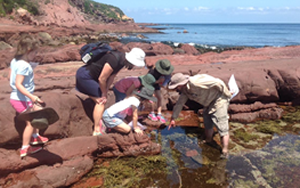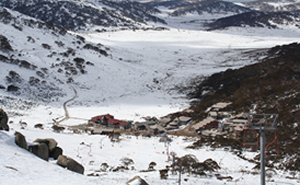This section comprises a detailed examination of the content material for one stage.
The first part of the syllabus material specific to each stage provides a summary of the teaching and learning, concepts, skills and tools for that stage.
This is followed by stage focus areas that provide the specific content to shape teaching and learning programs.
Content summary
-
overview at the beginning of each stage
-
description of the geographical concepts, skills and tools to be taught throughout the stage.
Focus areas
-
outcomes referenced in each focus area
-
key inquiry questions
-
content focus description
-
content, including the Australian curriculum descriptions and intended learning
-
includes annotations to learning across the curriculum content.
Note: The content material in the Years 7–10 Life Skills course is presented differently to the format used for all other stage content.
|
|
Download either a PDF or Word version of the syllabus material for your chosen stage from the NSW syllabus download page. Hint: The use of Internet Explorer may present technical difficulties when downloading this document. An alternative browser is recommended. |
The same two paragraphs form the Overview of teaching and learning for Early Stage 1 through to Stage 5.
In considering the intended learning, teachers will make decisions about the sequence, the emphasis to be given to particular areas of content, and any adjustments required based on the needs, interests and abilities of their students. Geography K–10 Syllabus, BOSTES
Content including knowledge and understanding, concepts, skills and tools should be integrated to provide meaningful learning experiences for students.
Where appropriate, students are to be provided with opportunities to investigate a wide range of places and environments from local to global scales.
The number of geographical concepts explicitly examined varies according to the stage, as does the learning focus for each concept.
|
|
Activity 6a: Concepts Read the geographical concept descriptions for your chosen stage. Note your response to the prospect of teaching this material to students at your school. What support and/or extension do you envisage may be required? Record your thoughts in the Activity booklet. |
All stages develop geographical inquiry skills that are applied during the process for geographical inquiry. These skills are always listed under three headings:
-
acquiring geographical information
-
processing geographical information
-
communicating geographical information.
|
|
Activity 6b: Inquiry skills Read the dot points listed under the three geographical inquiry skills for your chosen stage. How familiar do you believe teachers at your school will be with these skills? What support and/or extension do you envisage may be required for students? Record your thoughts in the Activity booklet. |
The geographical tools listed for each stage only provide examples and do not represent a definitive list. The tools are listed in five categories:
-
Maps
-
Fieldwork
-
Graphs and statistics
-
Spatial technologies
-
Visual representations.
|
|
Activity 6c: Tools It is important that students undertake learning experiences that develop their abilities in each of the five tool categories. With which of the listed tools do you feel comfortable? Which tools will you need to learn more about to be able to teach them effectively? Record your thoughts in the Activity booklet. |

The content summary for each stage is followed by its focus areas.
Focus areas are the most significant organiser of content for the purposes of planning and programming.
The content of each focus area is taught through a series of inquiries using the geographical inquiry process.
These inquiries develop student abilities in using geographical skills and tools.
Each focus area begins by listing the outcomes that are taught through the content. Outcomes articulate the basis for assessing and reporting student achievement.
|
|
Activity 7a: Outcomes Read the outcomes for your chosen focus area. What are the terms and ideas? How might these be assessed? Record your thoughts in the Activity booklet. |
Key inquiry questions guide how the focus area is best understood. Key inquiry questions guide the formulation of your overarching geographical question.
The key inquiry questions in the syllabus do not need to be posed verbatim to students. It is expected, however, that students would be able to answer the key inquiry questions after their study of the focus area, should someone pose the question to them.
|
|
Activity 7b: Key inquiry questions Read the key inquiry questions for your chosen focus area. Identify the key terms and ideas implicit in the questions, just as you did with the outcomes. Record your thoughts in the Activity booklet. |
The content focus paragraph outlines the essence of the content to be taught. This text may serve as a useful summary in communication with parents.
The content within each focus area outlines the substance of the teaching and learning that is to take place.
The content is subdivided by content headings. Each heading is followed by a single dot point outlining what students are required to investigate. The dashed points under the dot points are intended learning that students will undertake in the course of the investigation. Together these content descriptions allow students to achieve the specified outcomes for the stage.
|
|
Read the content focus for your focus area. Now read the content section that follows it. How does the content focus add value to the content description dot points? |
|
|
View How to read the Geography K–10 Syllabus (.ppsx 6MB). Text version (.docx 169kB). Audio description version (.docx 174kB). |

© G Braiding
A series of teaching and learning frameworks has been created to assist schools in the creation of units of learning as they implement the Geography K–10 Syllabus.
Schools can use the frameworks as a guide when choosing case studies, framing inquiry questions and selecting which geographical tools will be taught.
|
|
Download the teaching and learning framework for your chosen stage and focus area from the Human society and its environment website. (Please note this is an interim website. It will be replaced by a Department of Education site during term 3, 2016.) |
|
|
Activity 7c: Teaching and learning frameworks For your chosen stage, do the teaching and learning frameworks differ from complete units of learning? What will you need to do to turn the frameworks into teachable units of learning? |




